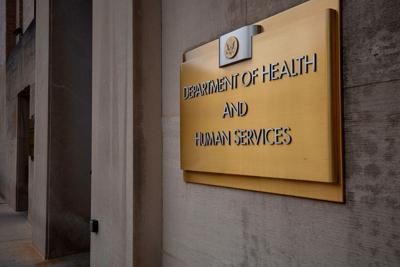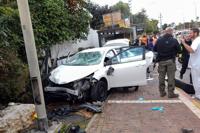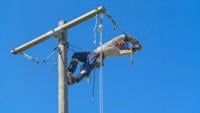(CNN) — In the future, some Covid-19 vaccines may not be jabs in the arm. They could be a nasal spray or even a patch on the skin. Those are just two examples of the kind of next-generation vaccine technology that federal health officials are hoping to help advance.
The US Department of Health and Human Services announced Friday that it has selected three initial next-generation vaccine candidates to receive funding awards to help kick-start planning for Phase 2b clinical trials, slated to begin as early as this winter. Two of those studies involve intranasal vaccine candidates, and one involves a self-amplifying mRNA vaccine candidate.
HHS announced more than $500 million in awards to help advance the development of potential vaccines and therapeutics, which includes those initial three vaccine candidates.
The funding – part of Project NextGen, a $5 billion government initiative to develop new and more durable Covid-19 vaccines and treatments – builds on the more than $1.4 billion that was awarded in August.
“It’s an opportunity to move the science forward,” said Dawn O’Connell, HHS’s assistant secretary for preparedness and response.
“While this is focused on Covid – and it should be as we look at this very unpredictable virus and try to stay ahead of it and try to get more durable and lasting immunity – the technology that we’re currently investing in, and are going to be announcing investments in, will be important in lots of different ways,” she added. “The ways in which we’re moving the science forward will be critical for future outbreaks of other diseases.”
The intranasal vaccine candidates are administered as sprays in the nostrils and have the potential to target viruses at the site of infections. One candidate is being developed by the Mount Sinai-affiliated company CastleVax, which was awarded $8.5 million. The other is by the New York-based biotechnology company Codagenix, which was awarded $10 million.
“We continue to look for ways to provide the most protection possible against this virus and so being able to stop it at the source of infection, within the nasal passage, would be a really important breakthrough for Covid, a respiratory virus,” O’Connell said, adding that providing a way to administer vaccine without the use of a prickly needle is an “appealing side benefit,” too.
Meanwhile, the self-amplifying mRNA vaccine candidate is administered as an injection and is being developed by the California-based biotechnology company Gritstone Bio, which was awarded $10 million.
According to Gritstone, unlike traditional mRNA, self-amplifying mRNA “has an inherent ability to replicate by creating copies of the original strand of RNA once it is in the cell.”
MRNA vaccines have proved successful in the nation’s fight against Covid-19, but the self-amplifying Gritstone vaccine candidate expresses additional antigens, said Robert Johnson, director of the medical countermeasures program at the Biomedical Advanced Research and Development Authority (BARDA).
An antigen is a substance that causes your immune system to make antibodies against it. Self-amplifying mRNA vaccines have been shown to enhance antigen expression at lower doses than conventional mRNA, making copies of itself at the cellular level.
“We think with these additional antigens, you have a good opportunity to get a broader response or response that lasts longer than the current vaccines,” Johnson said. “It’s self-amplifying, and what that really means is with that technology, the approach is that you need to use less of the vaccine to get an equal immune response.”
Also in the works for the future is the potential study of vaccines administered through skin patches.
As part of Project NextGen, BARDA awarded $100 million to the New York-based consultancy firm Luminary Labs to administer two competitions focused on incentivizing the development of patches for vaccine delivery and reducing the number of vaccine doses needed for an effective immune response. That funding is part of more than $241 million being awarded to support new technologies that will improve national preparedness for future Covid-19 outbreaks and patient access to therapeutics.
“One of the things we’re trying to do is incentivize and work with partners that traditionally don’t work with the US government,” Johnson said. “So we’re using this approach with Luminary to put out a notice saying, ‘This is what we’re looking for,’ and then providing an incentive for companies to move towards that goal.”
He added that the idea of using patch technology to deliver vaccines could have some advantages, such as a longer shelf life, not needing to be stored at cold temperatures or offering another option for people who want to avoid injections.
BARDA is also awarding more than $240 million toward all currently planned and future Project NextGen studies, including work in cold-chain sample management, genomic sequencing and increased laboratory capacity for testing.
Separate from Project NextGen, two-in-one combination vaccines are being developed for the future.
Moderna has been studying a two-in-one combination vaccine against both flu and Covid-19; Pfizer and BioNTech have been working on one, as has Novavax.
Moderna announced this month that in Phase 1/2 data, its combination vaccine against flu and Covid-19 appeared to elicit “strong” immune responses and had an “acceptable” safety profile. The company is targeting 2025 for potential regulatory approval of the combination vaccine.














